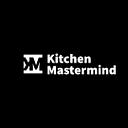WHY IS FOOD INVENTORY IN IMPORTANT?
It's always better to have more than less. Especially in a business, you don’t want to sell outdated stocks to customers. Though most of the business can do well even if they sell outdated items as long as they look clean and new. But that’s not how food businesses work. There’s no point in preserving food for so long when it is not required at the current moment. Managing a food inventory is a must and a very necessary job to be done. Without it, your business can go deep down into the ground.
Serving fresh and good food is one of the topmost priorities for any restaurant or food-related business. And management comes first after the business idea is ready to implement. How the food will manage? How to calculate total loss, total gain, and usage of leftover food? How to deal with food wastage done intentionally or not intentionally? There are several more questions you need to ask yourself after an analysis of daily food consumption. Why is this management so important? It’s obvious that food is the service you are giving to customers and nothing else. So if there’s no management done in that part, you might end up losing everything and even your business. Saving money every step and controlling the wastage are few essential measures. No one as a customer will want to eat yesterday’s food or leftovers. No one will want to recommend that restaurant or food service if they serve spoiled food and feedbacks are negative. In this, the rating may go down and feedback will keep on degrading. To increase the productivity and yield of food service you are providing a good plan and management can save the day. So, how to convince all the staff members to carry on with this plan? To do this, the head doesn’t need to rush and take it slowly. Managing is hence quite a difficult task. Try out explaining to them the benefits of marinating a good food inventory and how this will in return help the business in the long run, how the quality and yield of the service will increase and how health, identity theft, and over-usage, etc. of food can harm the whole business process.
Some tips for a good inventory management
#1
Use POS machines. We all know why and how machines are boon to us. And that’s why POS is a machine is considered as one of the best ways to manage the inventories and the whole system is required. It actually doesn’t make reports of spoilage, over-usage, theft, or any of these. But the point is to use it as a management tool for order planning, reports of transactions, data storage, etc. Also, have the tract of consumption of ingredients and raw materials. Without this planning, you’ll never get to know what is used when and how much.
#2
Maintain a schedule and be consistent. Create targets and goals and try your best to achieve them. sounds pretty lame for a full-fledging business right? Well, these small devices work everywhere and at every position for any kind of work. Buying bulk items for the less popular occasions and scarce buying for the important occasions can be hard on your bills as well the business. Maintain a small report of how much food is wasted on a weekly basis if possible or else a monthly one will also work. Sounds like too much work? It’s okay because that gives you the reason to hire few more staff members to carry out this inventory management process. True that this whole inventory thing is tough, but it pays well if done in the right direction.
Conclusion
Question was, why inventory? Why is it necessary? Why implement it? By this time, you might have got an overview and also an answer to these questions. Management is the heart of the business. The well-managed one wins the race no matter how slow it progresses. The art of business tells that management, patience, hard work, and few more ingredients when mixed together pays the best. Hence inventories are indeed important and worth paying attention to. Especially in a large restaurant, this process becomes even more complex and harder. Like how to make customers satisfy with minimal wastage of food and how to manage the number of ingredients to be added to a dish according to its price.
